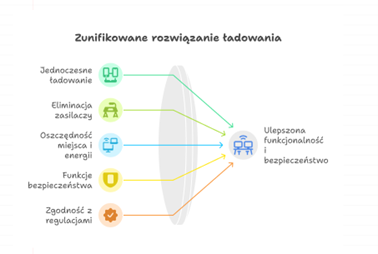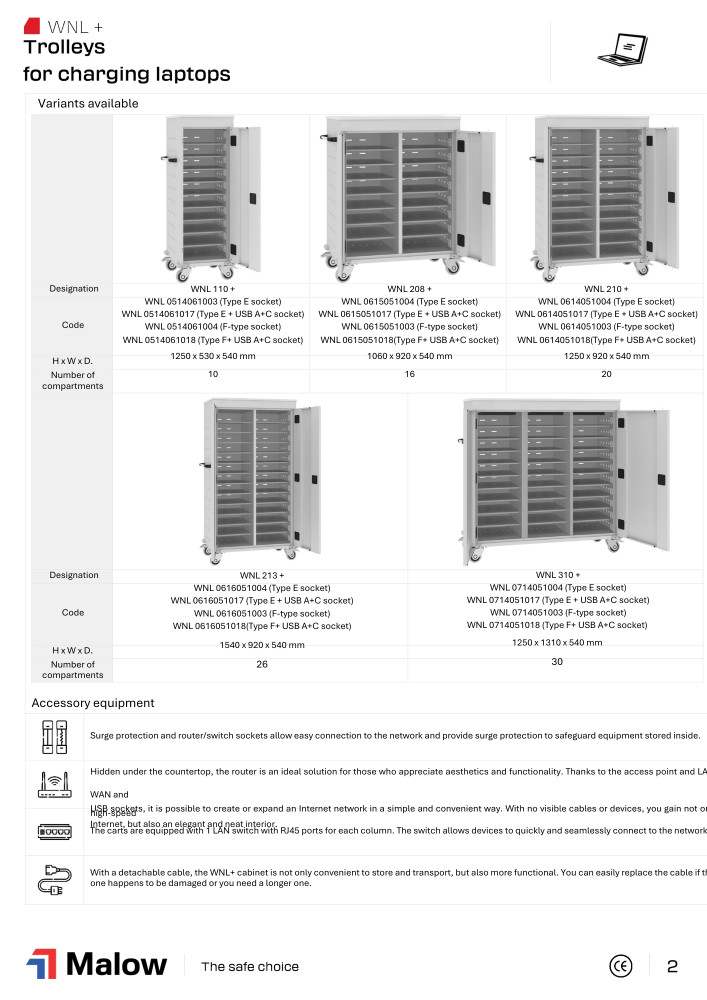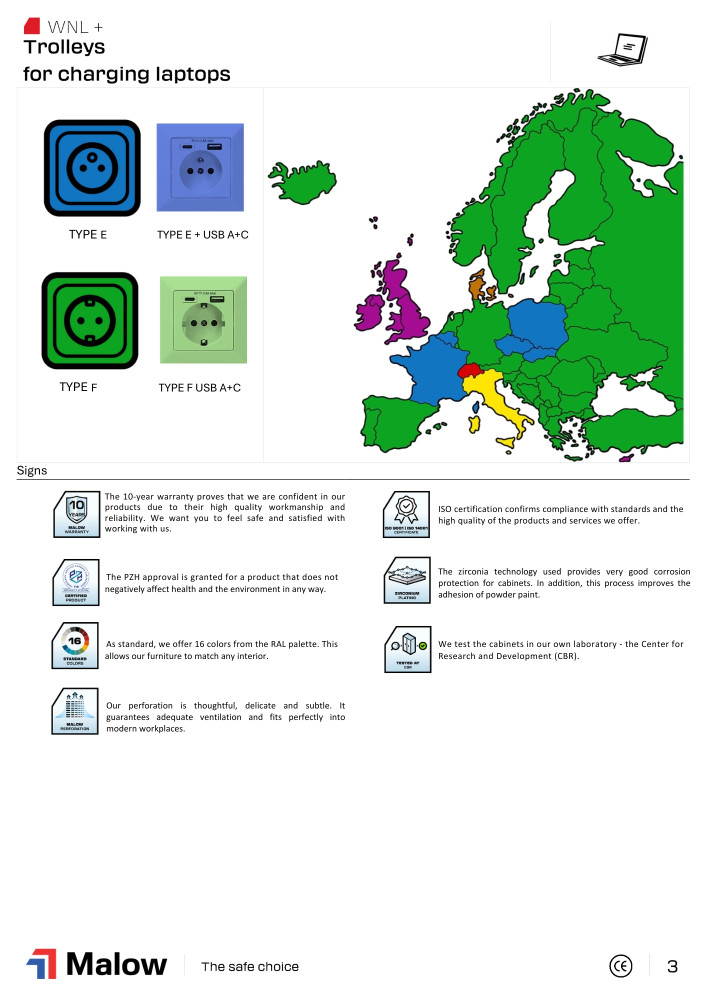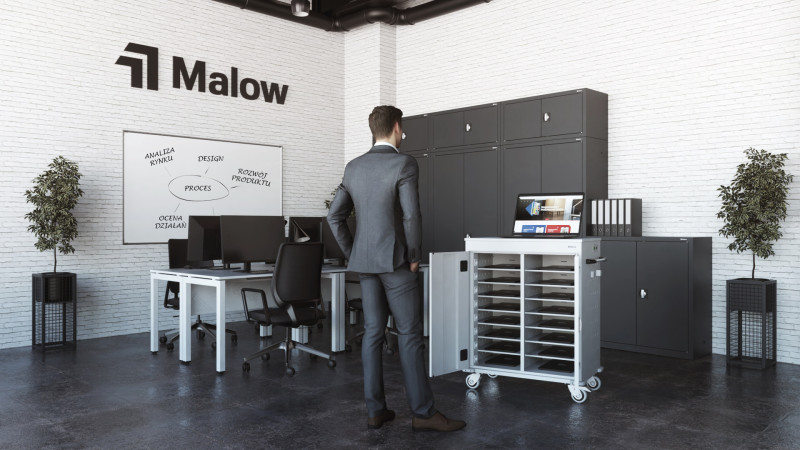New standard, new opportunities
As of December 2024, Directive 2022/2380, which introduces USB C as a common charging standard, is in force in the European Union. Its aim is simple: to reduce electro-waste, lower costs for consumers and standardise connectors in electronic devices.
OFrom April 2026, the directive will also cover laptops. This means a real revolution for educational and administrative institutions that use laptop charging trolleys such as our WNL+. Are you ready for the changes?
USB-C: the common denominator of technology
The Directive covers, inter alia:
- smartphones
- tablets
- cameras
- e-book readers
- laptops (from 2026)
- portable speakers
- games consoles
Benefits?
- Savings: The EU estimates that consumers will save up to €250 million per year.
- Less electro-waste: a reduction of 980 tonnes per year.
- Making work easier to organise: one cable = less chaos.
Why is the WNL+ with USB A+C sockets the best transition solution?
Our upgraded WNL+ cart is a response to the real needs of the market, which is currently at the interface between two generations of electronic equipment. Older devices still use USB-A ports, while new devices - in line with the EU directive - are being equipped with USB-C ports. A hybrid solution such as USB A+C sockets is therefore the most flexible and secure option for the interim, and often the final time.
By combining two types of connectors, the WNL+ enables:
simultaneous charging of older and newer equipment, without having to replace the entire fleet of devices or cables,

eliminating the need for manufacturers' power supplies and chargers, which reduces operating costs and organisational clutter,
space and energy savings, as devices can be charged directly from the sockets on the trolley, without occupying additional sockets in classrooms or offices,
ensuring safety, thanks to built-in surge protection, overheating protection and automatic device detection and power adjustment,
compliance with current and upcoming EU regulations, which means being ready for the future without incurring additional costs in two to three years' time.
What's more, the WNL+ can be fitted with castors for complete mobility. It can be easily moved between classrooms, offices or meeting rooms, without the risk of damaging the equipment during the move. Its modular design allows the number of sockets to be adapted to the needs of the specific organisation.
The WNL+ is a product designed for schools, libraries, offices, cultural facilities, open-spaces and wherever multiple devices are charged in one place. It is a cost-effective, functional and, above all, future-proof solution.
TOP 5 interesting facts that will surprise your readers:
NASA and USB-C: The space agency uses USB-C ports for communication and diagnostic systems used on the International Space Station. This choice is due to their reliability, data transfer speed and versatility. This proves that this standard works not only on Earth, but also in space.

USB-C does not always mean the same thing: Two cables that look identical can differ dramatically. One can support 15W charging and 480 Mbps transmission, while the other can support up to 240W and 40 Gbps (Thunderbolt 4). These differences can determine charging times or whether 4K video transmission will be possible.
USB Power Delivery (PD): Thanks to Power Delivery technology, the USB-C connector can intelligently select the charging power to the device - from 5W to as much as 240W. This makes it possible not only to charge smartphones quickly, but also to power ultrabooks, monitors and even printers.
Apple and the USB-C compulsion: Apple has stuck to its own Lightning connector for years, but an EU directive has forced the company to change. The iPhone 15 is the first model with a USB-C port. Curiosity? The US and European versions differ internally in the supported data transfer standard.
The end of bundled chargers: More and more manufacturers - not only Apple, but also Samsung or Xiaomi - are giving up on adding chargers to device packaging. The argument is ecological, but also... profit. USB-C is becoming a key part of the collective charging infrastructure - and with the WNL+ you can always have one on hand.
Case study: benefits of implementation in institutions
One educational establishment that decided to implement WNL+ trolleys with USB A+C sockets observed after just a few months:
- reduced logistical time for loading equipment,
- reducing the number of damaged cables,
- easier implementation of a BYOD (Bring Your Own Device) policy.
Frequently asked questions (FAQ)
Can I charge simultaneously via USB-A and USB-C? Yes, each socket works independently.
Can I recharge smartphones and laptops? Yes. WNL+ is compatible with mobile devices and computers.
Is it safe? Yes. Thermal and surge protection systems are used.
Ready for a change? Charge the future with WNL+
The EU directive is not just an obligation, but an opportunity. The WNL+ trolley is an investment in tidiness, ecology and compliance. Check out our full catalogue and see how much you can gain from the new approach to charging.
USB-C is the future. WNL+ is future-ready.
Download catalogue sheet of the WNL+ tablet trolleys
 |  |  |


